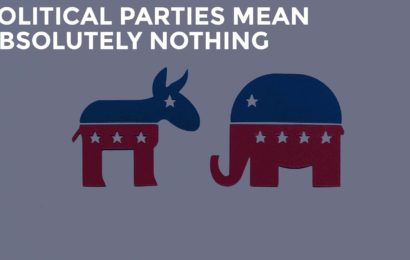
The Entire History of Ancient Rome in 1130 Words
Rome captured the popular imagination of the Western World almost immediately after it ceased to exist. The (Western) Roman Empire fell in 476 CE. Almost immediately after, Westerners were attempting to restore the empire in some way, shape, or form. The Eastern Roman Empire (Byzantines) imagined recapturing Western Europe for hundreds of years, the czars of Russia imagined Moscow as the “Third Rome”, Mussolini pretended he was restoring the Roman Empire, and so on.
Rome has been popular for essentially all of Western history. It had a real moment in Hollywood in the early 2000s. Gladiator debuted in 2000, King Arthur in 2004, and HBO’s Rome in 2005. There were several other forgettable contributions, but what they all have in common is a focus on the Roman Empire. The Empire has always drawn the most focus; however, the Republic lasted even longer. Before that, the Kingdom lasted for over 200 years.
The Roman Kingdom
Rome began in 753 BC (according to them) as a kingdom. After the Trojan War, the war in The Iliad, Aeneas, a prince of Troy, escaped. He fled to Carthage, where he shacked up with Queen Dido. He eventually left Queen Dido; this made her so angry she swore revenge, and Carthage and Rome feuded constantly after that. He eventually made his way to Latium in Italy, where he met the native Latins.
Two of his descendents, Romulus and Remus, were born and abandoned. They were breastfed for a while by a wolf before they were saved by a farmer. Eventually, they grew up and chose to found a city. They found seven hills and decided to build there. Remus wanted to build the city on the Aventine Hill. Romulus wanted to build the city on the Palatine Hill. Their respective camps feuded for a while over where to start the city. Eventually, Romulus killed Remus, and the dispute was settled. All of this is semi-mythological but it seems likely there was an early dispute between traders who wanted to be near the sea and farmers who wanted to be inland.
Either way, the city was founded on the hills in 753 BC. Rome had seven kings between 753 BC and 509 BC. The kings had a council of old men called the senate. Their families became the original patricians (old money rich folks). Eventually, the son of a king raped the cousin of a man named Brutus. Brutus raised a crew of like-minded anti-rape folks and overthrew the king. He then established the Republic.
The Roman Republic
The Republic established in 509 BC was very similar to the Kingdom that came before it. The Senate got to stay, but the power of the king was transferred to two consuls. The consuls were elected for a one-year term, and they shared the power. Either one could veto the other; this was designed to prevent any one man from assuming complete control of Rome ever again. It worked for almost 500 years.
At first, the Roman Republic was basically the same as any other Latin city-state. The Senate and the consuls governed a small hillbilly town in central Italy alike in dignity to dozens of other city-states. However, the Romans had two basic traits that separated them. They were incredibly militaristic, and they were organized. Roman organization allowed them to standardize military practices at a time when many city-states still fought as hordes. They created aqueducts and a planned city that allowed them to supply their citizens beyond just a subsistence level and created an upper class.
The broad upper class supplied the military might of the Republic. They weren’t professional military yet; they still had day jobs. But they were better trained and better equipped than their rivals. They systematically conquered all of Italy by 200 BC. They then expanded into Gaul (basically modern-day France), North Africa, and Greece. Julius Caesar even made it to Great Britain, which was basically the 50 BC equivalent of landing on the moon. The Britons were so rowdy and violent that Caesar went home and just told everybody he’d conquered Britain. The island would remain a problem for Rome for the next 500 years.
The Republic allowed some of its citizens to vote (men with money, basically). The senators were appointed by the consul, but other officials were elected. The plebeians (the regular folks) had elected representatives as well. In the 21st century, we’d consider it an imperfect democracy. Probably less free than most of Western Europe but about as free as Turkey. Freer than China or Russia.
Eventually, the army became professionalized. The state began supplying the military supplies, and poor plebeians began to sign up for the steady income. The army grew to consume as much as 50% of the annual budget. The soldiers, paid by their commanders and living off the spoils of conquest, became more loyal to individual commanders than the state. Julius Caesar, a figure loved by the plebeians, eventually used that adoration to have himself declared dictator for life. The senators, fearing the end of the republic, stabbed him to death. War broke out between Caesar’s adopted son (Augustus), Caesar’s lieutenant (Mark Antony), and the senators who wanted to restore the Republic. Augustus won the war and started the Empire.
The Roman Empire
The Roman Empire lasted from 29 BC to 476 AD, so it was never any one single thing. However, it can be divided into two distinct periods, the principate and the dominate. Caesar Augustus, the first emperor of Rome, never actually called himself an emperor. He preferred the term princeps, first citizen. To ease the transition from republic to empire, Augustus maintained all of the trappings of the republic. The Senate remained, and so did the magistrates. In theory, they were even free to disagree with Augustus. In practice, he issued orders, and the senate followed them. The Empire went on in this pseudo-democratic way until the Emperor Diocletian in 284.
Rome experienced the Crisis of the Third Century, which nearly destroyed the Empire. At one point, it even split into three separate domains. The Crisis included plague, rebellions, economic depression, and just about everything that ruins a state. Diocletian steered it back to stability and replaced the fake democracy with an open dictatorship. This period is the dominate. The Emperors assumed a deified status. The Emperor Constantine comes out of this period.
Eventually, the Roman Empire was deemed too unwieldy and was split into the Eastern Roman Empire and Western Roman Empire. The Western portion faced another series of crises in the 5th century. These crises proved fatal. In 476, Odoacer sacked Rome, deposed the child Emperor, and ended the Western Roman Empire for good.
The Eastern Roman Empire went on for another 1000 years, but that’s a different article.






